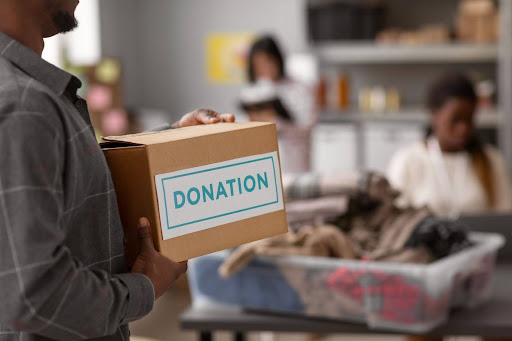
By Willy Blackmore, Word in Black
When Hurricane Katrina was barrelling toward New Orleans in late August 2005, Mayor Ray Nagin ordered a complete evacuation of the city. But when the storm made landfall as a Category 3 storm on August 29, there were still some New Orleanians who were in their homes. There are a variety of reasons why those people decided to weather the storm rather than evacuate — they may have stayed through previous storms, or were worried about leaving their property unattended—but there’s one thing the vast majority of those who stayed had in common: they were Black.
There were, of course, plenty of Black New Orleanians who did evacuate, but among those who didn’t, researchers found that finances were one of a handful of reasons that people didn’t leave. There were some people who didn’t have a car, and even for those who did, the timing of the hurricane made leaving seem impossible.
“The hurricane came at the wrong time,” right at the end of the month, one resident said, according to a study of those who stayed behind. “We were waiting for our pay day.”
But money that has had to come out of individuals’ pockets will be more widely provided by the government thanks to changes to the Federal Emergency Management Agency’s disaster assistance program. Part of the overhaul includes expanding access to immediate cash payments given to those most affected by hurricanes and other natural disasters — which could help the poor, often non-white residents who have the most barriers to leaving for safety. But will it be enough?
The changes are being framed pretty explicitly as an environmental justice issue. In a statement announcing the overhaul, for example, Homeland Security Secretary Alejandro Mayorkas said, “In the past, the limitations of federal assistance have delayed disaster recovery for too many, especially communities that are disproportionately affected by disasters.”
Making an evacuation order mandatory doesn’t mean that it’s cheap to leave: when Hurricane Harvey hit Houston in 2017, researchers found that it cost households $1200, on average, to ride out the storm elsewhere (including lost wages) — more, if they didn’t have a free place to stay and had to sleep in a hotel. The FEMA payments, however, are only $750 per household.
There is the promise of additional help, too, which could help with the other common situation faced by Black people in natural disasters: renting rather than owning.
In addition to some more administrative changes (previously, all disaster survivors were required to apply for a small business administration loan before receiving any other kind of federal financial support, regardless of whether or not they actually owned a small business; that requirement will now be scrapped) the changes include the new Displacement Assistance program, which “will provide eligible survivors with up-front funds to assist with immediate housing options of their choice, such as costs associated with staying with family and friends, until they are able to secure a rental option to focus on their long-term recovery.”
In New Orleans, the Black population dropped significantly after Katrina. And research has shown that the amount of affordable housing declines in the wake of a storm, and more so in communities that had both more renters and more people of color prior to the disaster. If a lack of cash makes it difficult to get out before a storm, the long-term effects on the housing market are what often force people away for good — the new disaster assistance program could at least help mitigate that somewhat.
This article originally appeared on Word in Black.


